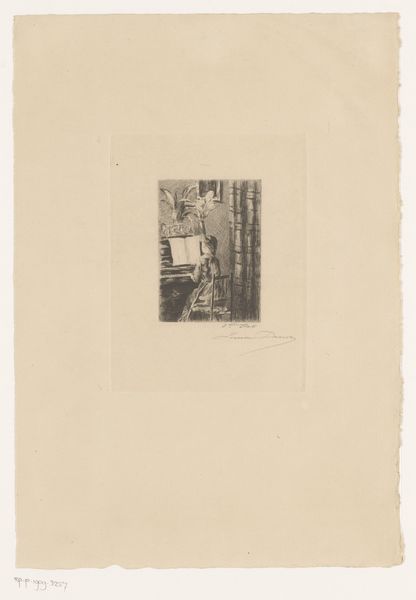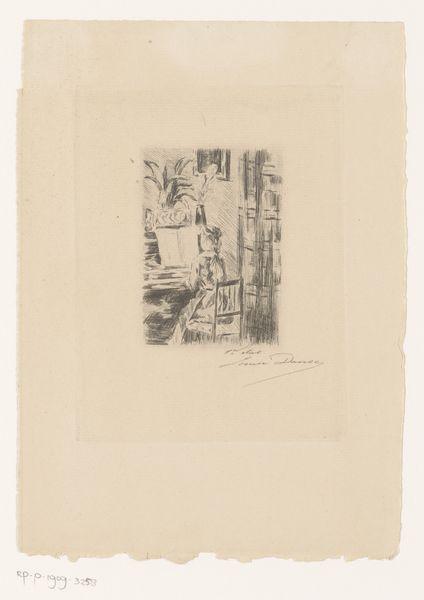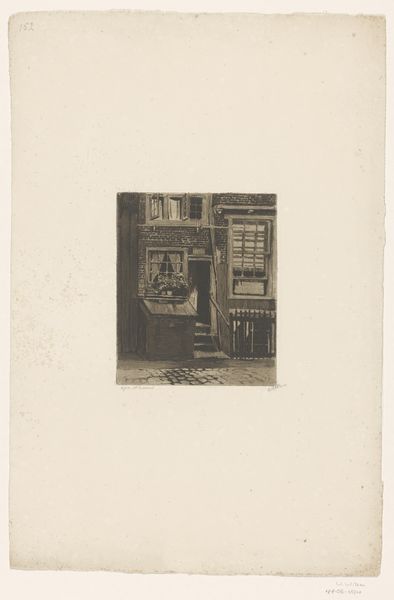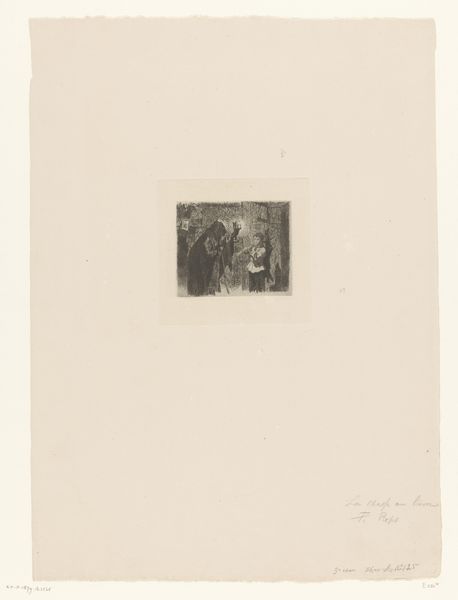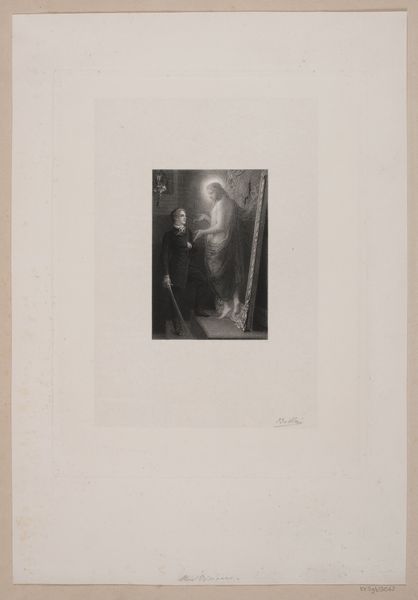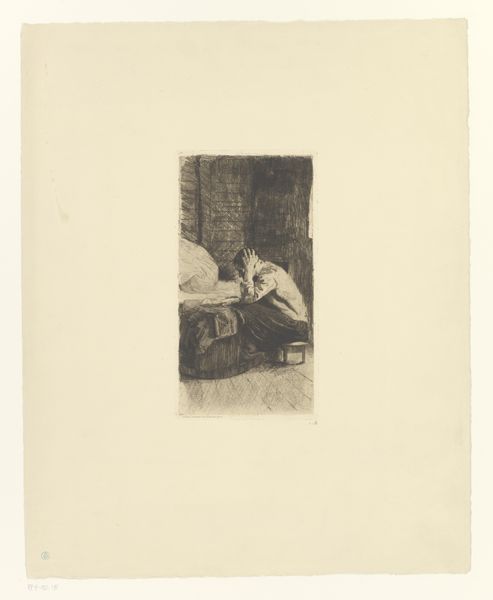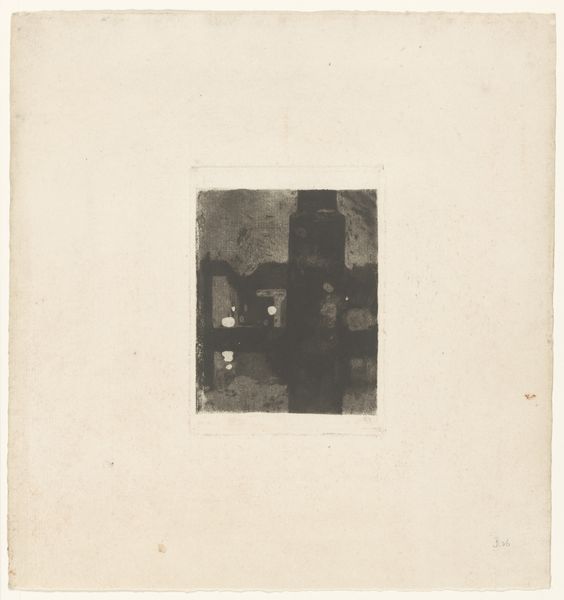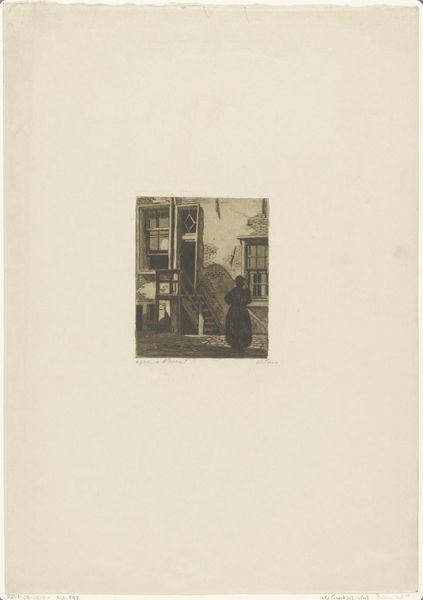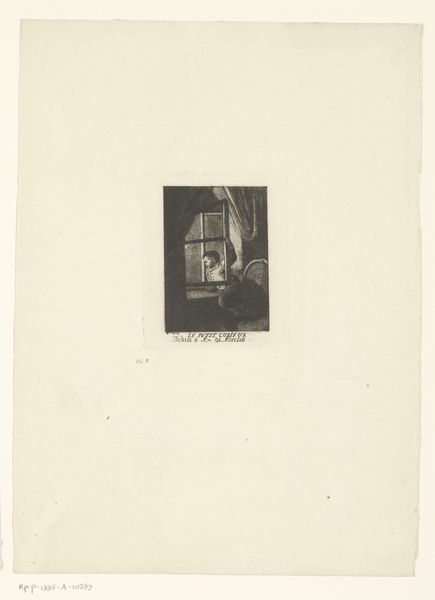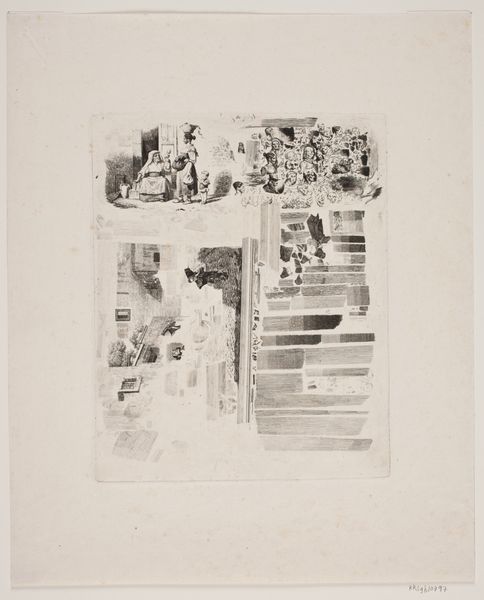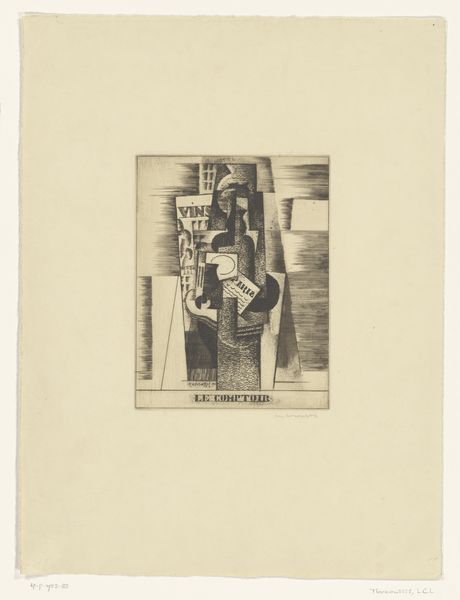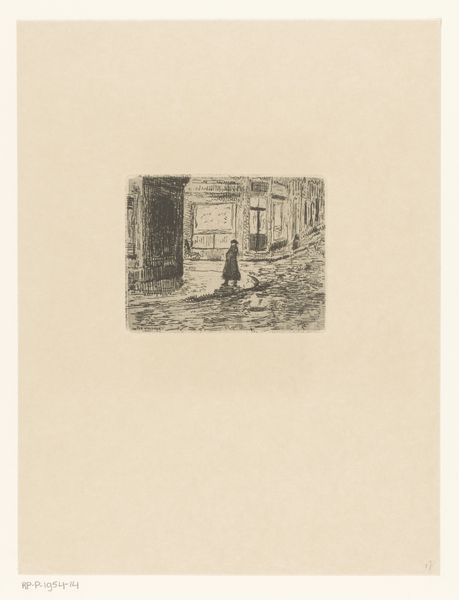
Twee meisjes, de ene speelt op de piano, de ander staat ernaast te zingen 1877 - 1909
0:00
0:00
drawing, print, etching, paper
#
portrait
#
drawing
# print
#
etching
#
figuration
#
paper
#
genre-painting
Dimensions: height 159 mm, width 121 mm
Copyright: Rijks Museum: Open Domain
Curator: Look at the delicate linework in this etching. Louise Danse created this piece, "Two Girls, One Playing the Piano, the Other Standing Beside Singing", sometime between 1877 and 1909. Editor: It feels like a quiet, intimate moment. The subtle shades almost give it a dreamlike quality. There’s a clear contrast in labor, though, isn't there? One girl is actively producing music while the other passively receives it. Curator: Indeed, and it raises questions about the role of women in the arts at that time. The piano itself, and musical training, represented a certain level of bourgeois accomplishment and cultural capital. These skills served as pathways to potential opportunities and offered means for building social connections. Editor: That’s fascinating when we consider the material constraints of printmaking. Etchings are inherently reproducible. Danse is using this craft, typically viewed as 'lesser', to capture a scene of bourgeois domesticity. It’s like she's democratizing access to these glimpses of upper-class life. Do we know if these kinds of images were used for commercial purposes, circulated more broadly than artworks intended for the wealthy only? Curator: Good question. Printmaking as a medium does lend itself to wider distribution, potentially reaching audiences beyond the traditional art patrons. This would provide economic agency to female artists, challenging the then-status quo. Editor: The setting too, seems purposefully understated, domestic. Was Danse commenting on the limited sphere of activity allowed to women of this era, depicting their art restricted to this homey scene? It becomes almost like a commentary on cultural expectations. Curator: Precisely! We must look beyond its aesthetic appeal and unpack its social narratives and significance within its historical framework. The distribution network behind Danse’s images really shapes their importance, doesn’t it? Editor: This seemingly simple domestic scene is such a rich exploration of production, gender and class. I'll never look at such imagery the same way again. Curator: Me neither. Context really does illuminate these quieter works.
Comments
No comments
Be the first to comment and join the conversation on the ultimate creative platform.
